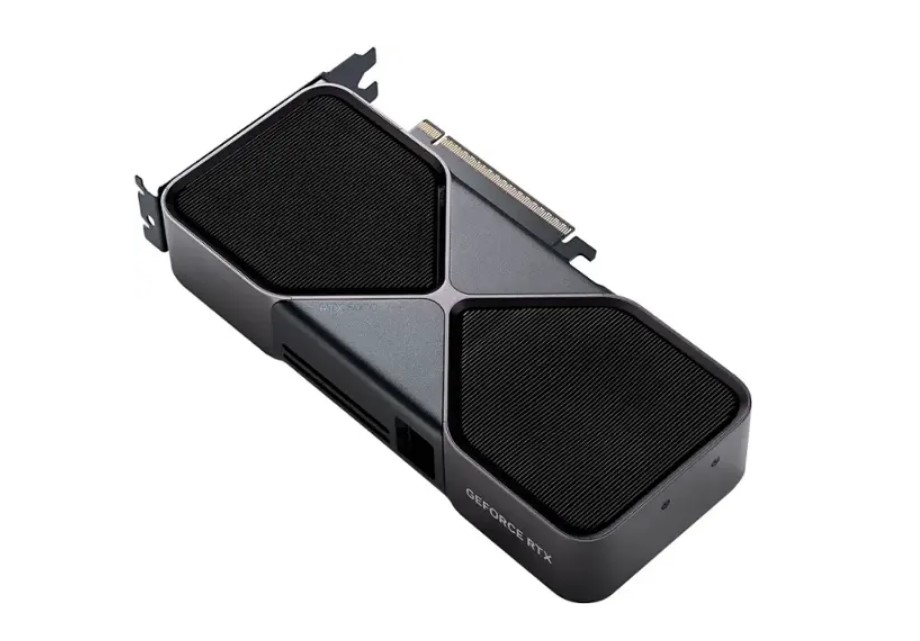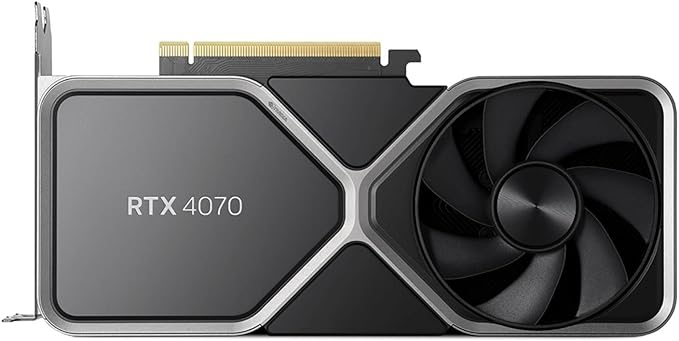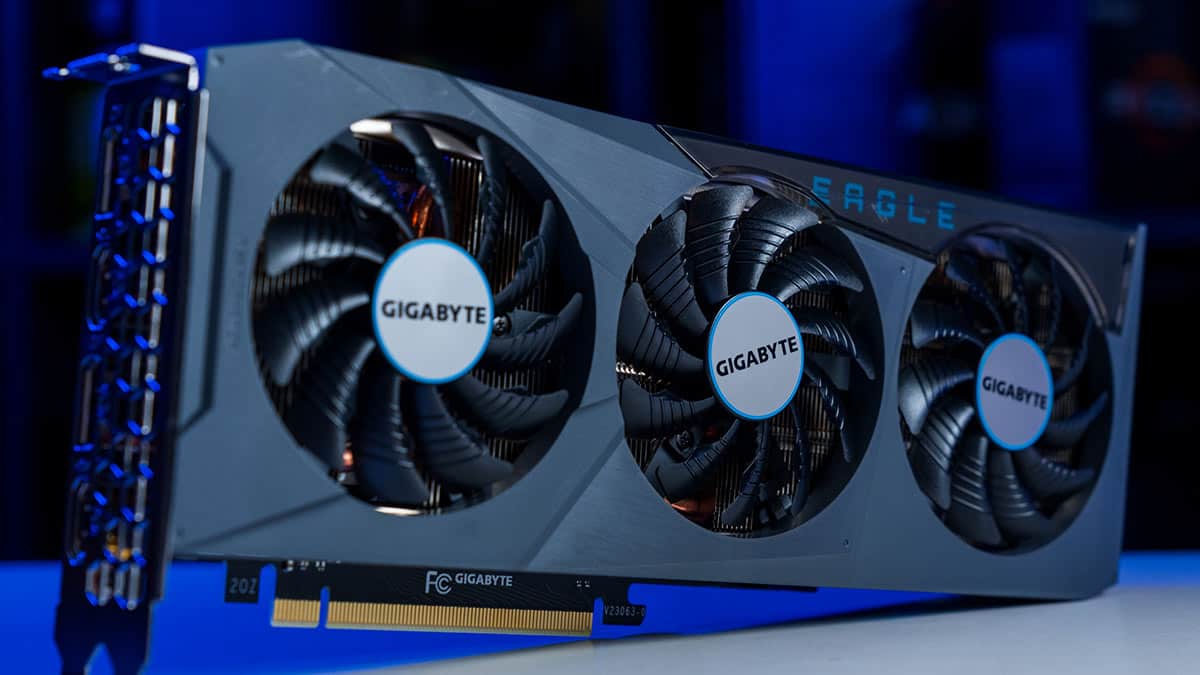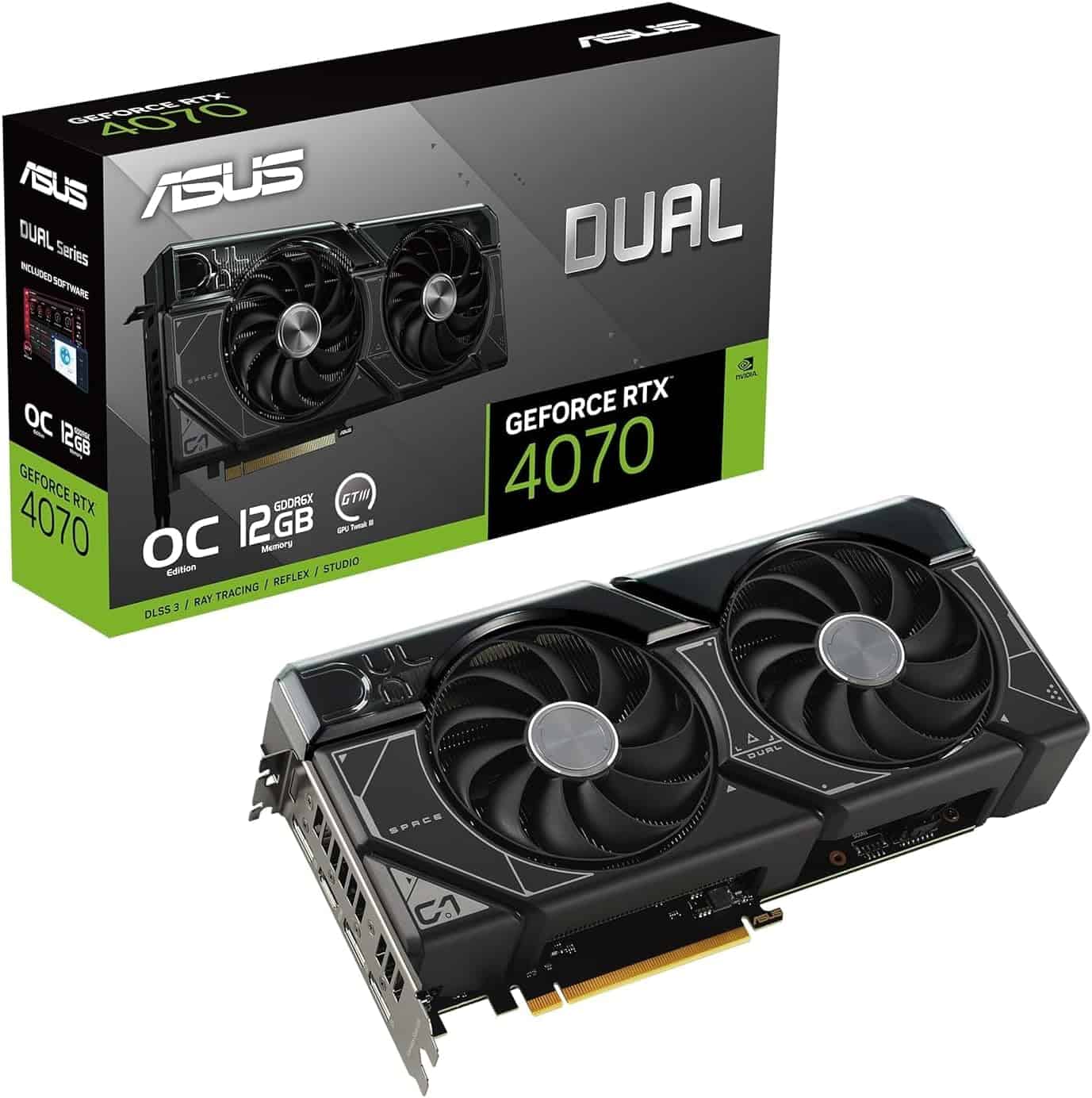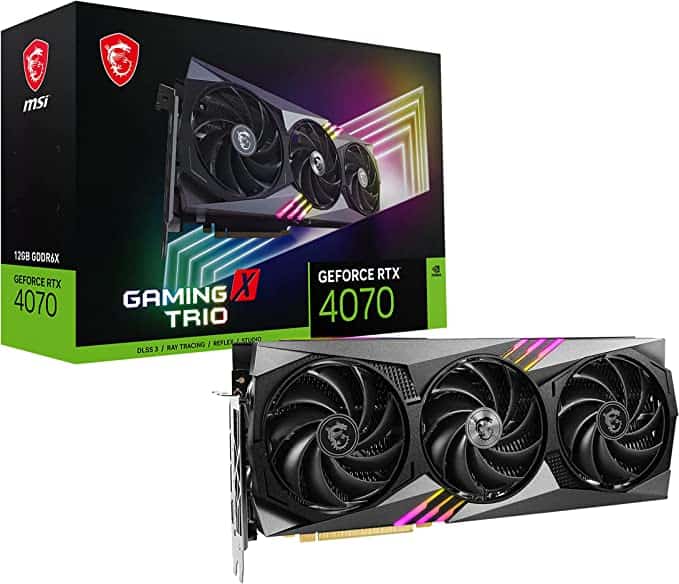RTX 5070 vs RTX 4070 specs comparison – how do they differ?
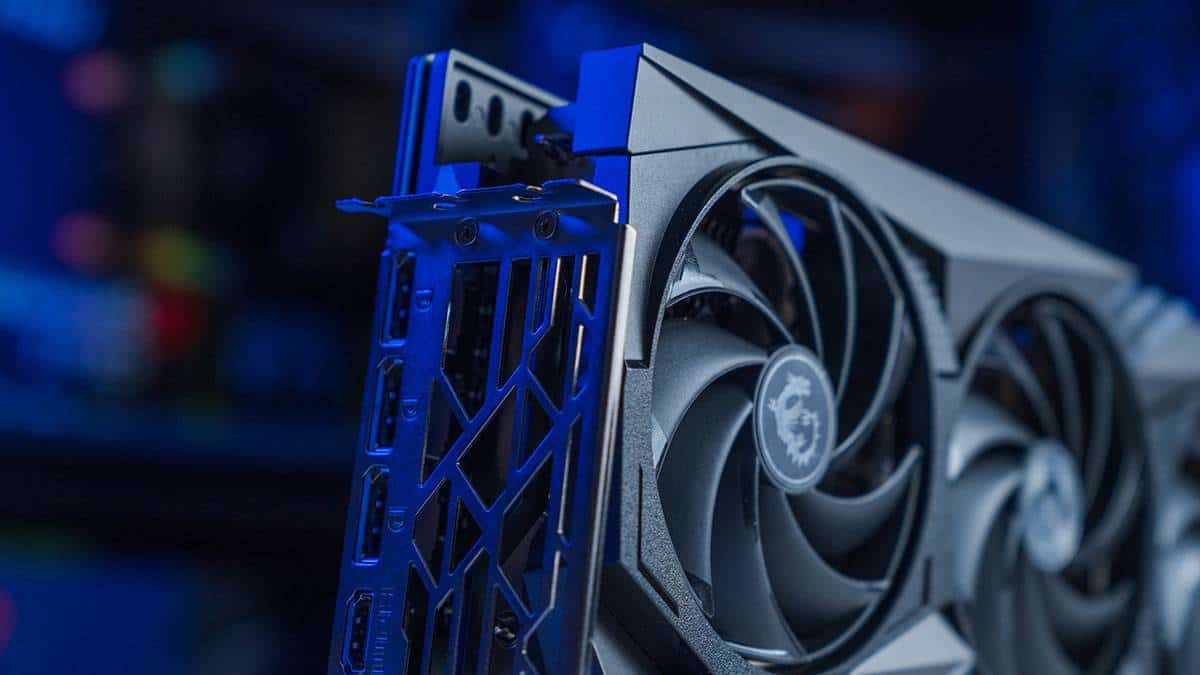
Table of Contents
Along with three other GPUs, the RTX 5070 was announced during CES 2025, and since then, many have been wondering how the mid-range card performs against other options in the market, including some GPUs from Nvidia itself. It was set to drop on 20th February, but it got delayed while the RTX 5070 Ti went ahead with the launch.
That being said, there are many RTX 5070 Ti reviews available online, which can help us gauge where the RTX 5070 will be in terms of performance. It seems that it’ll have a difficult time competing against the previous generation’s high-end options and certainly can’t go toe-to-toe with the RTX 4090.
Prime Day may have closed its doors, but that hasn't stopped great deals from landing on the web's biggest online retailer. Here are all the best last chance savings from this year's Prime event.
- Sapphire Pulse AMD Radeon™ RX 9070 XT Was $779 Now $719
- AMD Ryzen 7 7800X3D Processor Was $449 Now $341
- Skytech King 95 Ryzen 7 9800X3D gaming PC Was $2,899 Now $2,599
- LG 77-Inch Class OLED C5 TV Was $3,696 Now $2,996
- AOC Laptop Computer 16GB RAM 512GB SSD Was $360.99 Now $306.84
- Lexar 2TB NM1090 w/HeatSink SSD Was $281.97 Now $214.98
- Apple Watch Series 10 GPS+ Smartwatch Was $499.99 Now $379.99
- AMD Ryzen 9 5950X processor Was $3199.99 Now $279.99
- Garmin vívoactive 5 Smartwatch Was $299.99 Now $190
*Prices and savings subject to change. Click through to get the current prices.
So, a fair and one of the most obvious comparisons has to be against its predecessor, the RTX 4070, as everyone would like to know what improvements it offers.
We reviewed the RTX 4070 and found it to be a solid card for 1440p gaming. On the other hand, while real-world benchmarks of the RTX 5070 are not here, Nvidia has shared the specifications of the card. Thanks to this, we have some information that can help us compare the cards on paper while we wait for real-world benchmarks to become available.
With the RTX 5070 release pushed back to March, we have to wait a bit longer to see the actual performance. For now, here’s how the RTX 5070 and RTX 4070 stack up against each other on paper so far.
RTX 5070 vs RTX 4070 specs comparison
| Specifications | RTX 5070 | RTX 4070 |
| Cores | 6144 | 5,888 |
| Base clock speed | 2.16 GHz | 1.92 GHz |
| Boost clock speed | 2.51 GHz | 2.47 GHz |
| Memory | 12 GB GDDR7 | 12 GB GDDR6 |
| Memory interface | 192-bit | 192-bit |
| Bandwidth | 672.2 GB/s | 504.2 GB/s |
| TDP | 250W | 200W |
| Measurements | 242 mm x 112 mm x 40 mm | 240 mm x 110 mm x 40 mm |
As you can see in the table above, both GPUs offer the same amount of VRAM, but the 5070 offers a better memory type. On top of that, it also has more cores, better clock speeds, and a higher bandwidth.
Memory
When it comes to the VRAM, the RTX 5070 offers 12 GB of GDDR7 memory with a 192-bit memory interface and a bandwidth of 672.2 GB/s. On the other hand, its predecessor, the RTX 4070, also offers 12 GB VRAM but GDDR6 memory. While the memory interface is the same, the bandwidth is 504.2 GB/s.
The higher the VRAM of your GPU, the easier it will be for you to adjust and improve the graphical settings in a game, especially at higher resolutions like 4K. However, it's a bit disappointing to see that the 5070 has the same VRAM as its predecessor. Sure, the better memory type will help it deliver better performance even with the same amount of VRAM, but we were hoping to see at least 16 GB in the 5070.
AMD is also introducing 16 GB VRAM in their upcoming mid-range cards. On the other hand, Intel also recently introduced two budget GPUs with 10 and 12 GB VRAM. So, for mid-range cards, 16 GB should be the standard now.
Clock speeds and cores
The RTX 5070 has a base clock speed of 2.16 GHz and a boost clock speed of 2.51 GHz. On the other hand, the RTX 4070 has base and boost clock speeds of 1.92 and 2.47 GHz, respectively. This means that thanks to the better speeds, the 5070 can process more data per second than the 4070.
Aside from that, the RTX 5070 also takes the lead when it comes to the core count, which was already expected. It offers 6,144 cores, while the 4070 offers 5,888 cores. This means that there is a difference of 256 cores between the two.
Sure, the difference between the two isn't as big as the RTX 5090 and 4090, which is over 5,000, but it's still something that will help the 5070 gain a performance advantage over the 4070. On top of that, the card also offers fifth-generation Tensor cores and fourth-generation RT cores, meaning each core on the 5070 is much more powerful and advanced than the ones present on the 4070.
Performance
Now, let’s take a look at the performance of both cards. As discussed earlier, we’ve reviewed the RTX 4070 and have tested it in several games to get an idea about its real-world performance.
In Cyberpunk 2077, which is a pretty demanding game, we were constantly getting around 108 FPS at 1080p and around 74 FPS at 1440p. We then switched the resolution to 4K, which caused the FPS to drop to 27. Keep in mind that we were playing the game with the graphical settings maxed out. Next, in Assassin’s Creed Mirage, the card was able to deliver 106 FPS at 1080p and 74 FPS at 1440p. Surprisingly, at 4K, it was able to hit 60 FPS.
On the other hand, in less demanding games like CS2, the FPS was above 300 at 1080p, and it stayed around 214 at 1440p. Even at 4K, the FPS was around 103, but this was expected, considering CS2 isn’t a resource-hungry game.
As for the RTX 5070, real-world benchmarks are currently not available. At the moment, only RTX 5090 reviews are available on the web, and if we look at them, we can see that the flagship GPU offers a 20-50% performance increase over the RTX 4090 at 4K.
Based on that, we can expect the 5070 to be at least 20 to 30% faster than its predecessor at 1440p, and it should be able to deliver better performance at 4K. In any case, we’ll update this section with real-world benchmarks when we put the RTX 5070 through our testing lab. To get a better insight as to how different these GPUs are, we recommend checking out the RTX 5080 vs RTX 4080 Super comparison.
Size
Now, let’s discuss the size of both cards. The RTX 4070 Founder’s Edition measures 240 mm x 110 mm x 40 mm (LxWxH), which is almost the same as its predecessor, the RTX 3070. Although the RTX 40-series cards were known for their chunky sizes, the RTX 4070 remained the same.
Thankfully, Nvidia hasn’t decided to make any major changes to the RTX 5070 when it comes to size. Even after offering better specifications, the RTX 5070 FE measures 242 mm x 112 mm x 40 mm, so it’s slightly bigger than its predecessor. In other words, you’ll be able to fit the cards inside your case easily if it already has a 4070. However, do keep in mind that this is for the Founders Edition, as third-party models have a different size and can be bigger.
Features
Nvidia has an upscaling technology called DLSS. This is available for all RTX GPUs, including the 20, 30, and 40-series cards. Right now, we're using DLSS 3.5, which debuted back in 2020 and has been helping users with getting more FPS in games to this day. However, it will soon be replaced by DLSS 4, a much more advanced version of the upscaling technology.
DLSS 4 was announced during CES 2025 and it will be released alongside two RTX 50-series cards, the RTX 5090 and RTX 5080, at the end of this month. Once it gets released, it will be available to all those who were able to use the previous version.
However, one important feature, Multi Frame Generation, will be exclusive to the RTX 50-series. This feature helps generate three additional frames per traditionally rendered frame, which is massive. In fact, Nvidia currently claims that the RTX 5070 will offer performance similar to the RTX 4090, and we believe that it's because of DLSS 4 considering the card doesn't match its specifications.
So, in short, while the RTX 5070 already has better specs than the 4070 on paper, DLSS 4 is something that will put it in an entirely different league. In the video shared by Nvidia below, you can see how DLSS 4 offers over 100 more frames than DLSS 3.5 in Cyberpunk 2077.
Another feature announced during CES 2025 is Reflex 2. While this won't be exclusive to RTX 50-series cards, it will debut on them first. Nvidia has not shared when it will become available for previous lineups, but it will happen sometime in the future.
For those wondering, Reflex is Nvidia's way of reducing latency in games. At the moment, we have Reflex 1, which many gamers are using to make their gameplay smoother. In the image below, Nvidia reveals how Reflex 1 reduced the latency in The Finals from 56 ms to 27 ms, and Reflex 2 slashed it further to just 14 ms. This will be useful especially for competitive gamers, as it eliminates lag and stuttering.
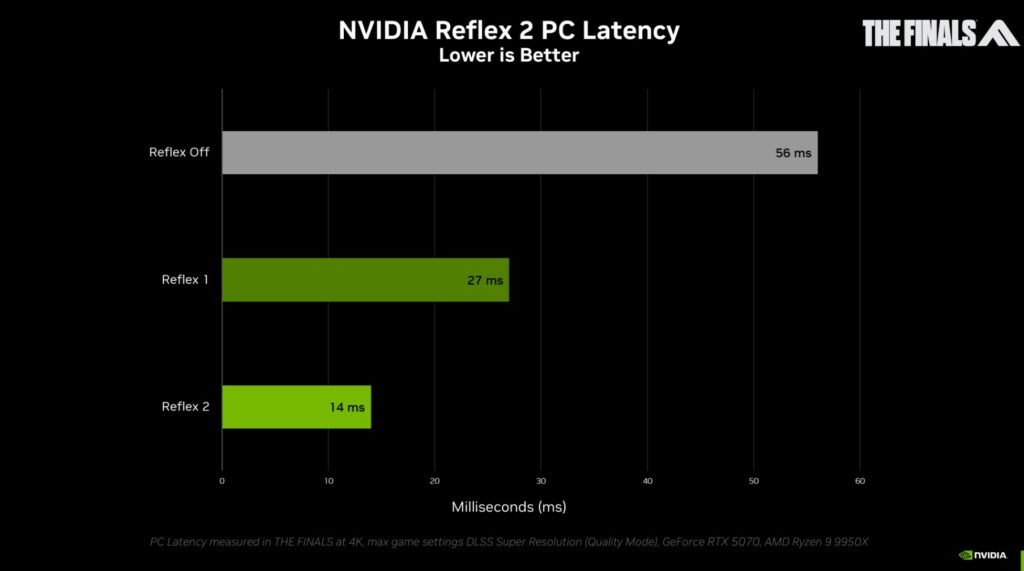
So, with DLSS 4 and Reflex 2, the RTX 5070 will offer much better performance than the RTX 4070. It might not have been able to achieve the same with just its specifications, but the two new technologies should put it way ahead of its predecessor.
RTX 5070 vs RTX 4070 – price comparison
According to Nvidia, the RTX 5070 will launch with a price tag of $549. However, keep in mind that this will be for the base model, as the third-party variants will most likely carry a higher price tag – somewhere between $650 and $700. As well as, there is a high demand for the cards; we’ve seen the 5090 and 5080 sell out and are hard to even buy at MSRP, so it doesn’t look promising for the 5070.
On the other hand, the RTX 4070 was launched with a $599 price tag. These days, you can find it either above or below this price, depending on the variant. Once the 5070 hits the market, the price of the 4070 will most likely drop.
Early impressions
Based on the specifications shared by Nvidia, the RTX 5070 offers specs better than its predecessor, the RTX 4070. It offers a better memory type, more CUDA cores, higher bandwidth, and a better architecture. On top of that, the card will also benefit greatly from the Multi Frame Generation feature of DLSS 4, which will help it deliver performance similar to the RTX 4090, at least that’s what Nvidia says.
However, we’re a bit disappointed to see only 12 GB VRAM in the 5070. Competitors like AMD are introducing 16 GB VRAM in their upcoming mid-range options, while one of Intel’s budget options has 12 GB VRAM. With the 5070, we were hoping to see at least 16 GB of memory.
In any case, once the card hits the market, we’ll make sure to update this guide with our in-depth review and real-world benchmarks.
-
-
ASUS Dual GeForce RTX 4070 OC Edition
- GPU: AD104
- CUDA Cores: 5,888
- VRAM: 12GB GDDR6
- Bandwidth: 504.2 GB/s
- Memory bus width: 192-bit
- Base clock Speed: 1920 MHz
-


